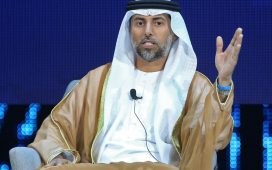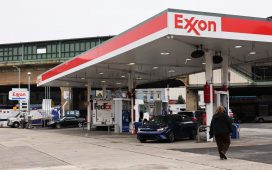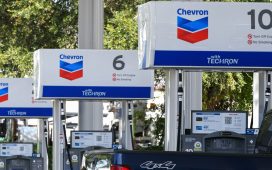Wind turbines rotate in the Baltic Sea between the islands of Rügen and Bornholm (Denmark). (Photo … [+]
dpa/picture alliance via Getty Images
Europe has begun developing offshore energy islands that host more than just wind turbines.
A Dutch-Belgian island will combine wind turbines with seaweed farms that will capture carbon and produce human food, animal feed, biofuels or bioplastics. Germany and Scotland are cooperating on a wind farm that will produce green hydrogen.
“This may only be the start for many different kinds of energy islands,” said Marc von Keitz, a program director for the U.S. Advanced Research Projects Agency-Energy (ARPA-E). “Offshore wind farms can become the anchor technology for more integrated offshore energy islands.”
In addition to seaweed cultivation, offshore wind could be combined with floating solar, wave power, tidal power, and ocean thermal-energy conversation, Keitz said in May at the 2021 ARPA-E Energy Innovation Summit, where he headlined a panel of agency researchers exploring such technologies.
Offshore energy islands could also be used for fertilizer production, direct capture of CO2, and biorefineries that produce different kinds of carbon-neutral fuels. “Doing the processing offshore would dramatically reduce transportation costs for the raw materials,” he said.
Europe generates 12 gigawatts of electricity offshore, with plans to attain 60 GW by 2030 and 300 GW by 2050. The U.S. recently set its initial target of 30 GW by 2030.
Keitz cautioned that humans developing energy islands need to remember that “We’re not alone out there.
“It is important to design energy islands to prevent pollution, both chemical and noise pollution, as well as to avoid entanglement,” Keitz said. “Our ultimate goal for floating energy islands will be to not just produce sustainable energy products, but to enhance and restore the ocean environment.”








